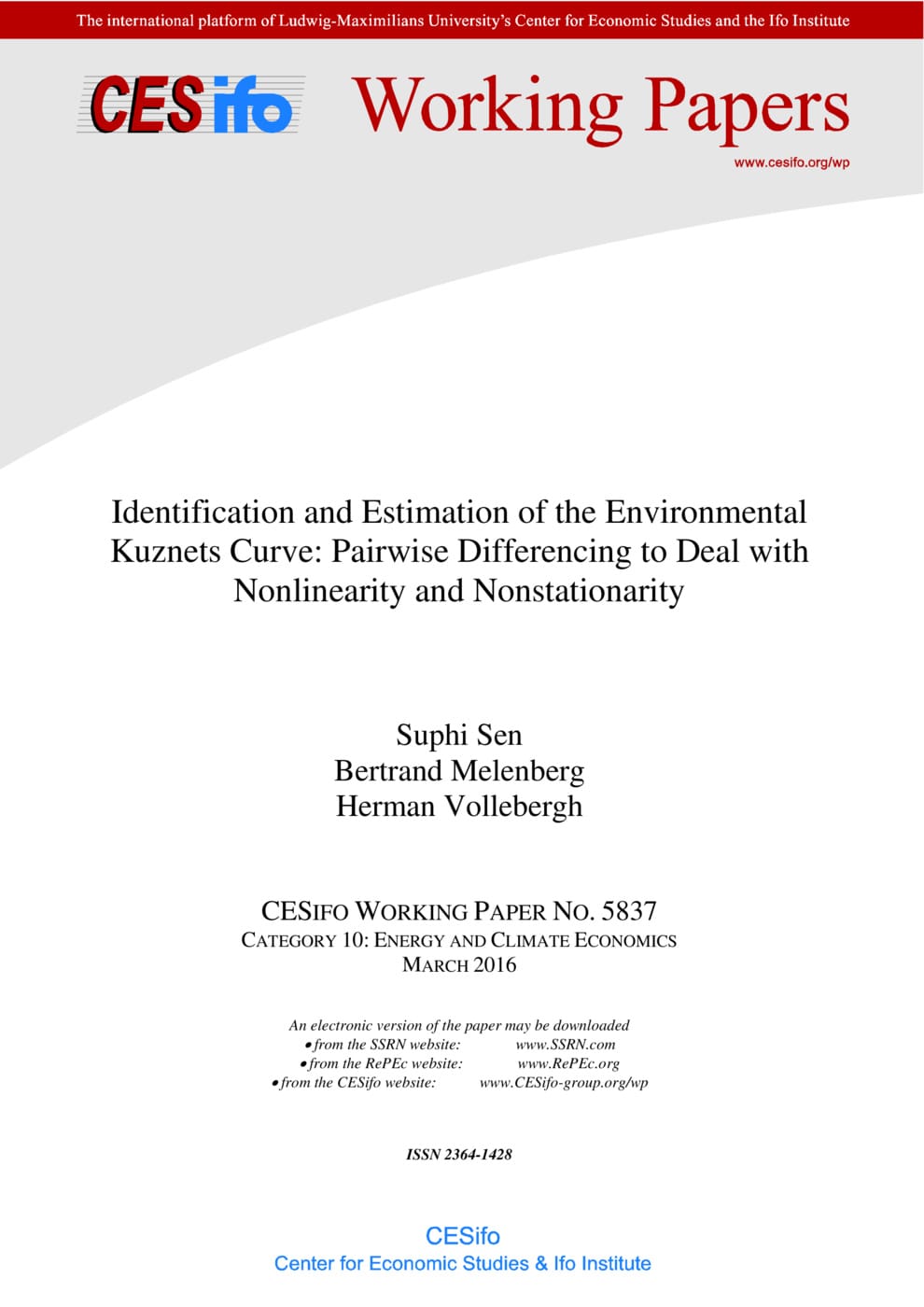Identification and Estimation of the Environmental Kuznets Curve: Pairwise Differencing to Deal with Nonlinearity and Nonstationarity
CESifo, Munich, 2016
CESifo Working Paper No. 5837

We propose an estimation strategy that accounts for two major problems raised in the empirical literature testing for the prevalence of the inverted U-shaped relation between environmental degradation and economic activity, namely the Environmental Kuznets Curve (EKC) hypothesis. First, we use pairwise differencing to properly identify the income effect, and to make use of estimators that likely suffer less from heterogeneity, cross-sectional dependence, and other common factor problems. Second, we apply nonlinear-nonstationary parametric and non-parametric estimation techniques to estimate the pairwise differenced regressions, since panel unit root tests indicate that our income and emission series are integrated of order one. Our results for regional CO2 emissions systematically yield positive income effects while the estimated time effects do not compensate for these income effects sufficiently to generate an inverted U-shape for CO2 emissions.
Resources and Environment
Energy and Climate Economics